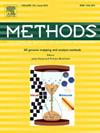Multifunctional nanophotonic photoacoustic biosensors: a new era in molecular imaging–guided deep-tissue cancer monitoring
IF 4.3
3区 生物学
Q1 BIOCHEMICAL RESEARCH METHODS
引用次数: 0
Abstract
Monitoring cancer therapy is difficult because of restricted imaging depth, inadequate molecular specificity, and delayed response evaluation. Moreover, conventional imaging techniques fail to provide high-resolution, real-time views of the dynamic tumor microenvironment during therapy. Among emerging technologies, nanophotonic photoacoustic biosensors have gained prominence as multifunctional platforms that enable real-time, non-invasive imaging and dynamic monitoring of cancer therapy. This review discusses advances in nanophotonic engineering, including plasmonic nanostructures, NIR-II fluorophore-integrated systems, SERS-active materials, fiber-optic probes, and hybrid nanosystems, all tailored to enhance molecular targeting and signal specificity. In addition, biomimetic and biologically inspired nanosystems with enhanced tissue penetration and reduced autofluorescence in the NIR-II spectrum can be specifically highlighted. The key aspects of clinical translation are examined including biosafety, molecular specificity, and scalability. Furthermore, further explore the convergence of these biosensors with artificial intelligence and Internet of Things (IoT) frameworks to support adaptive, patient-specific decision-making in oncology. As a result of these multifunctional systems that combine nanophotonics, machine learning, and molecular diagnostics, oncology could shift towards precision-guided treatment. Finally, it proposes strategic avenues for clinical adoption, placing PAS at the vanguard of the next generation of cancer diagnostics.
多功能纳米光子光声生物传感器:分子成像引导深部组织癌症监测的新时代。
监测癌症治疗是困难的,因为有限的成像深度,不充分的分子特异性,和延迟反应评估。此外,传统的成像技术无法在治疗过程中提供动态肿瘤微环境的高分辨率实时视图。在新兴技术中,纳米光子光声生物传感器作为多功能平台获得了突出的地位,可以实现实时、无创成像和动态监测癌症治疗。本文综述了纳米光子工程的进展,包括等离子体纳米结构、NIR-II荧光团集成系统、sers活性材料、光纤探针和混合纳米系统,所有这些都是为了增强分子靶向和信号特异性而定制的。此外,在NIR-II光谱中具有增强组织穿透性和减少自身荧光的仿生和生物启发纳米系统可以特别突出。临床翻译的关键方面进行了检查,包括生物安全性,分子特异性和可扩展性。此外,进一步探索这些生物传感器与人工智能和物联网(IoT)框架的融合,以支持肿瘤学中自适应的、针对患者的决策。由于这些结合了纳米光子学、机器学习和分子诊断的多功能系统,肿瘤学可能会转向精确指导治疗。最后,它提出了临床应用的战略途径,使PAS成为下一代癌症诊断的先锋。
本文章由计算机程序翻译,如有差异,请以英文原文为准。
求助全文
约1分钟内获得全文
求助全文
来源期刊

Methods
生物-生化研究方法
CiteScore
9.80
自引率
2.10%
发文量
222
审稿时长
11.3 weeks
期刊介绍:
Methods focuses on rapidly developing techniques in the experimental biological and medical sciences.
Each topical issue, organized by a guest editor who is an expert in the area covered, consists solely of invited quality articles by specialist authors, many of them reviews. Issues are devoted to specific technical approaches with emphasis on clear detailed descriptions of protocols that allow them to be reproduced easily. The background information provided enables researchers to understand the principles underlying the methods; other helpful sections include comparisons of alternative methods giving the advantages and disadvantages of particular methods, guidance on avoiding potential pitfalls, and suggestions for troubleshooting.
 求助内容:
求助内容: 应助结果提醒方式:
应助结果提醒方式:


